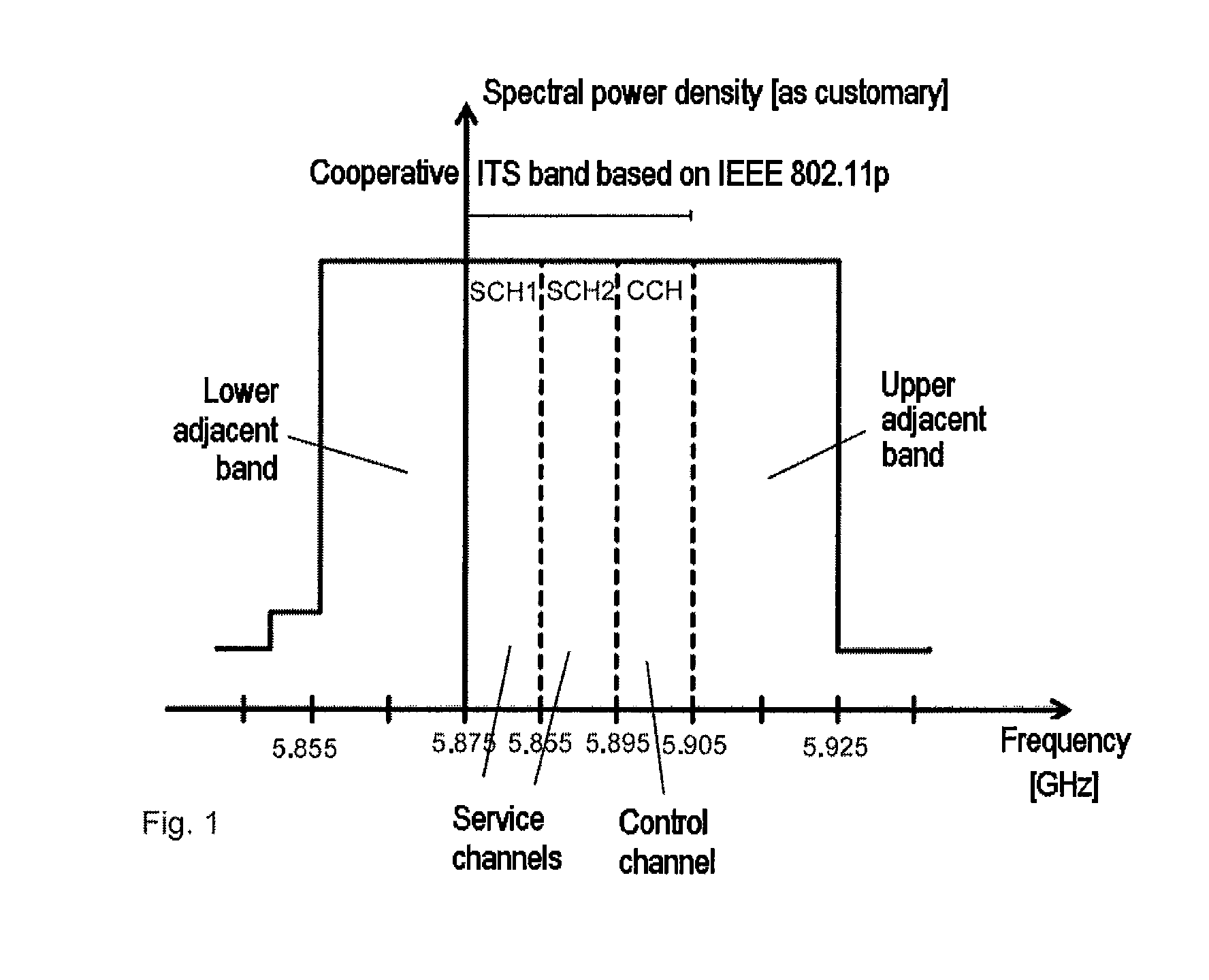Method for positioning and vehicle communication unit
a vehicle communication and positioning technology, applied in the direction of directions, instruments, measurement devices, etc., to achieve the effect of high reliability
- Summary
- Abstract
- Description
- Claims
- Application Information
AI Technical Summary
Benefits of technology
Problems solved by technology
Method used
Image
Examples
Embodiment Construction
[0028]FIG. 1 shows the channel allocation for the vehicle-to-surroundings communication within the context of the ITS standard based on ETSI for IEEE 802.11p as a spectral power density in arbitrary units as a function of the frequency in the unit GHz. The cooperative ITS band is situated at approximately 5.9 GHz and has two service channels SCH1 and SCH2 and a control channel CCH. This split is currently planned on the basis of the ETSI standard. This cooperative ITS frequency band having a width of 30 MHz has been approved in Europe exclusively for vehicle-oriented safety applications and, on the basis of current planning, is split into three channels of 10 MHz each, the vehicle-to-surroundings communication being based on a dual receiver concept, according to which two channels are always monitored. These are the control or supervisory channel CCH and one of the service channels, according to present discussions preferably the first service channel SCH1, that is to say the upper ...
PUM
 Login to View More
Login to View More Abstract
Description
Claims
Application Information
 Login to View More
Login to View More - R&D
- Intellectual Property
- Life Sciences
- Materials
- Tech Scout
- Unparalleled Data Quality
- Higher Quality Content
- 60% Fewer Hallucinations
Browse by: Latest US Patents, China's latest patents, Technical Efficacy Thesaurus, Application Domain, Technology Topic, Popular Technical Reports.
© 2025 PatSnap. All rights reserved.Legal|Privacy policy|Modern Slavery Act Transparency Statement|Sitemap|About US| Contact US: help@patsnap.com



